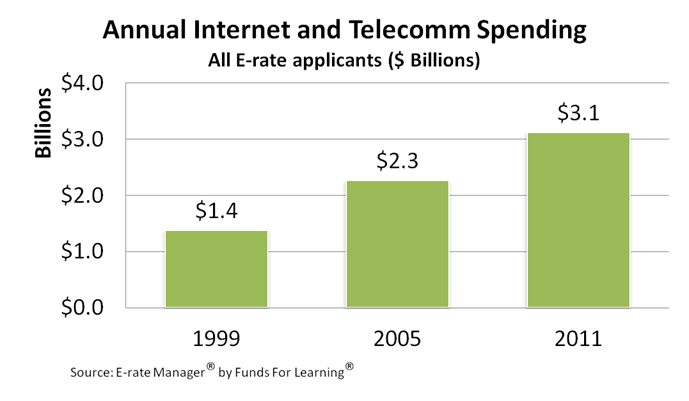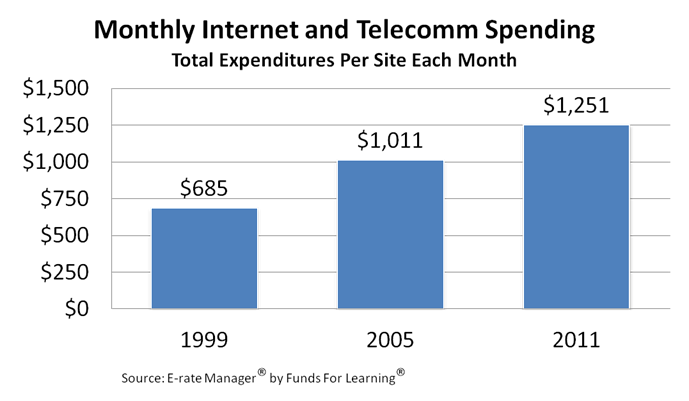The truth about E-rate demand is that even as state and local education budgets continue to shrink, more school districts are looking toward integrating technology into the teaching curriculum, as well as increasing the bandwidth to run this technology. The fact is that the only way school districts can receive federal K-12 technology funding today is through the E-rate program. Due to government budget cuts, the No Child Left Behind technology grant, which only a few short years ago was funded at nearly $700 million annually, is no longer being funded at all. This makes the E-rate program a vital funding stream for the K-12 education and library communities and, as illustrated below, it is time for an infusion of additional dollars by the FCC.
Funds For Learning is seeking support from parents, students, teachers, administrators and members from the community to lend their names to an online FCC petition to ask the FCC to increase the funding stream for schools and libraries in order to meet the needs of our 21st century students. Please take a moment to read the open letter to FCC Chairman Genachowski, and consider lending your signature to the petition!
Here are some facts regarding the growth in demand for E-rate dollars which paint a clear picture as to why the current level of funding is not sufficient.
Fact #1: The annual demand for E-rate funds continues to hover at around $4 billion, yet in FY 2011 the FCC determined that the funding cap would only be $2.29 billion.
Fact #2: In Funding Year 1999, 20,739 applicants applied for telecommunications and internet access services. In FY2011, the number jumped to 25,084: nearly a 21% increase in the overall number of applicants applying for Priority 1 services.

The number of specific sites tied to those applicants seeking E-rate discounts on Internet access and telecommunications has increased 24%, from 168,085 in 1999 to 208,164 in 2011.

Fact #3: The average monthly spending per site on Internet access and telecommunications services has increased 83% since 1999, growing from $685/month to $1,251/month. (This figure is based on pre-discount amount.) This increase represents the growing integration of technology into our schools, and the need to raise the E-rate funding cap.

The result of the FCC’s 2010 Broadband Usage Survey provides further evidence that the demand for the E-rate dollars will continue to rise. 80% of the respondents agreed that their connectivity does not meet their current needs. Even still, more schools are turning to e-books and digital textbooks, expanding the use of handheld devices, and integrating distance learning through the use of video, all of which creates additional demand for high-speed connectivity. Policymakers are asking school districts to provide online testing and real time data assessment, however, many school districts’ networks simply cannot support those types of applications.
The FCC’s attention is currently focused on the E-rate program, and the Commission understands the benefits provided to K-12 students across the country. Now is the time to encourage the FCC that more support is needed, while they have the means to make the change and before the current (and future) needs completely outpace available funding.
